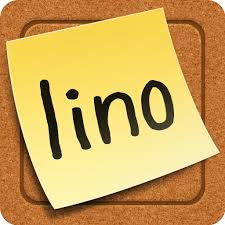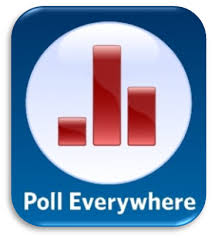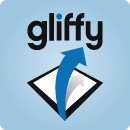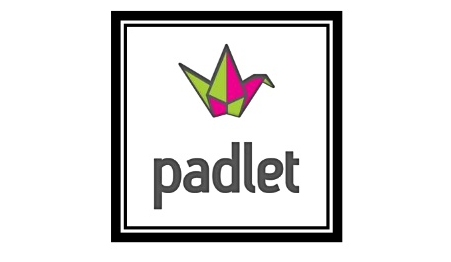Activating Strategies
“If you want students to learn you must first get their attention.” ~Judith Willis, M.D., M.Ed
Purpose of Activating Strategies: To activate students’ prior knowledge through the use of engaging strategies designed to focus learning.
“Prior knowledge is the knowledge the learner already has before they meet new information. A learner’s understanding of a text can be improved by activating their prior knowledge before dealing with the text, and developing this habit is good learner training for them.” It is important to activate students’ prior knowledge. Teachers do this to help them assess what students may or may not already know about the content. Two ways to think of engaging students’ prior knowledge:
1) link content to what they may already know and 2) build background knowledge by creating new experiences for them.
 Clive Shepherd’s Universal Design Principles, (No. 2) discusses how to hook the learner. Shepherd suggests hooking them with emotion creates attentive, curious, and excited learners. Whether using humor or drama, something visual or creating a mood with storytelling, emotional engagement is key to getting students attention from the start.
Clive Shepherd’s Universal Design Principles, (No. 2) discusses how to hook the learner. Shepherd suggests hooking them with emotion creates attentive, curious, and excited learners. Whether using humor or drama, something visual or creating a mood with storytelling, emotional engagement is key to getting students attention from the start.
The activating strategy is what inspires the learner and is key to instructional design. The hook should motivate the students and link to prior knowledge of the student or created by the teacher.
If your hook gets “below the surface” it can be a powerful tool towards Higher Order Thinking Skills.
Essential Questions…activate thought and help anchor the lesson with a target for learning.
Middle school math students enter the classroom with the same question: “What are we going to do today?” A little perplexed by that question, the teacher answers “math”. The teacher lacks understanding that this question is a natural reflection of students’ inherent curiosity and desire to understand what they were going to be learning.
Today we know that students need clear learning goals. Learning targets convey to students the goals for the lesson—”what to learn, how deeply to learn it, and exactly how to demonstrate their new learning. In our estimation (Moss & Brookhart, 2009) and that of others (Seidle, Rimmele, & Prenzel, 2005; Stiggins, Arter, Chappuis, & Chappuis, 2009), the intention for the lesson is one of the most important things students should learn.”Students must see, recognize, and understand what the learning target. Their learning target must be in developmentally appropriate, student-friendly, and culturally respectful language. As you construct your Essential Question answer the following three questions from the student’s point of view:
- What will I be able to do when I’ve finished this lesson?
- What idea, topic, or subject is important for me to learn and understand so I can do this?
- How will I show that I can do this, and how well will I have to do it?
The learning target should be presented in advance of the lesson in the form of an Essential Question. Best practice is to have a consistent central location for the Essential Questions. Be sure to write out Essential Question. Some students just aren’t going to get it when you put the big letters EQ on the wall. Make sure that your questions are big enough for all students to see from any view point in the classroom. Your Essential Question must be easily spotted in every classroom. The intention of the lesson must be clear and must be viewable so students and teachers are not flying blind. It must be in grade level language that is understandable for the learner. And most importantly it should be posed to stimulate thought not simply get an answer.
Characteristics of interactive use of Essential Questions:
- Teacher uses as a tool to distribute summary throughout the lesson.
- They anchor the lesson with a focus and a place to come back to.
- The are embedded with key vocabulary.
- They are built with Higher Order Thinking Question stems to promote enduring understanding.
- They are used as a reflective formative assessment tool at the end of the lesson to determine what stduents have learned.
While Essential Questions are a significant piece of the Activating Strategy additional layers of advance organizers are principal elements in stimulating interest and fostering student success. Activating Strategies should also include Advance Organizers.
Advance Organizers…help arrange and systemize the lesson in advance.
Advance Organizers are simply organizers used in advance of the lesson. Sometimes these organizers are confused with Advanced (notice the d on the end) Organizers, these are something different used for critical thinking skills. Be sure not to confuse the two. Advance Organizers help students to understand what it is they are suppose to be learning.
A syllabus is an exemplary illustration of providing a preliminary outline of learning goals. This can be chunked into smaller pieces throughout the year via units of study.
An agenda that is shared prior to a class meeting is another way of organizing information. It helps the lesson stay on track, especially good for teachers that have those students who like to get “out of their lane” and often take the rest of the class with them.
Advance Organizers can also be a visual aid such as a graphic organizer rather than an outline form. Graphic Organizers are abundant, but finding one that can be used to systemically organize the lesson information will help students have a visual reminder of what they are learning.
Brain Based Research reveals that the theory of primacy indicates that while learning, we tend to remember best that which comes first. Ebbinghaus published the first studies on this phenomenon in the 1880s. This is why front loaded direction is a crucial action.
Educators must ensure that students can make thoughtful connections and necessary deliberation between objectives and standards to lead to enduring understanding. Organizers are a means of front-loading information to students through the use of nonverbal (non-linguistic) representations. Students use them to sort and chunk content into manageable pieces of information. Organizers can be used throughout a lesson, but using them in advance is a research based strategy that indicates a 28 percentile achievement gain.
Read Alouds…as an activating strategy.
Not all activating strategies are advance organizers. But using an advance organizer as an activating strategy helps students interact with the content. Using them together, for example using an activator of a read-aloud with an advance organizer of a Story Star helps students to interact with the lesson and helps them link/build their understanding to propel them into deeper content.
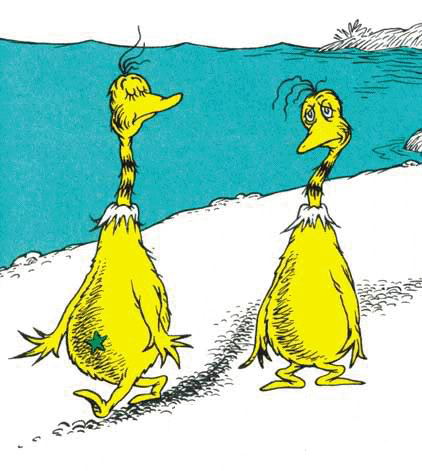 A specific example is Dr. Seuss’ “Starbelly Sneetches”. What is often overlooked in Seuss’s books is the historical basis and true meaning behind the story. The Sneetches is a book about creatures with stars on their bellies that live with the some of the same creatures that don’t have the stars.
A specific example is Dr. Seuss’ “Starbelly Sneetches”. What is often overlooked in Seuss’s books is the historical basis and true meaning behind the story. The Sneetches is a book about creatures with stars on their bellies that live with the some of the same creatures that don’t have the stars.
In the book, the star-bellied Sneetches play the role of ‘superior type’ while the Sneetches without stars are left out of everything. The starless Sneetches are treated horribly and not thought of as equal. Seuss meant for this to resemble racism and discrimination. The Sneetches only care about what they look like and not who they are; they only care for the way their skin looks.
Now, remember, this book was written shortly after World War 2, shortly after the genocide of millions of Jews based on something they could not control. Not only were Jews discriminated against at that time, but the Japanese, Germans, and Italians were as well. The starless Sneetches were treated almost identically like the Jews, and Seuss wanted to make that clear. He wanted his readers to see exactly what it was people were doing when they discriminated.
In the end, after the Sneetches try to change themselves over and over by removing their stars and putting them back on, they realized that it didn’t matter if they had a star or not. They realized that they were all Sneetches, all equal, and that they should be treated like it. Seuss wanted us to realize that we are all humans, and all equal, just like the Sneetches.
Using the simplest of organizers, a Venn Diagram, in advance of the story, the teacher can guide students to record information of similarities and differences and have an in depth conversation of the importance of treating everyone fairly. This is a powerful little Activating Strategy before plunging into a unit on the Holocaust or even Equal Rights Movements. It couples the Advance Organizer with a read-aloud as an Activating Strategy to engage students and link as well as build their background knowledge around the content.
Letting your students talk…as an activating strategy!
People are naturally social beings, so it is only natural that most of your students are as well. Teachers who leverage this do so by using strategies to allow their students to talk, yet the talk has a purpose and is grounded in the focus of a lesson.
Carousel Brainstorming is a great strategy for this. Students will rotate around the classroom in small groups, stopping at various stations for a designated amount of time. While at each station, students will activate their prior knowledge of different topics or different aspects of a single topic through conversation with peers. Ideas shared will be posted at each station for all groups to read. Through movement and conversation, prior knowledge will be activated, providing scaffolding for new information to be learned in the proceeding lesson activity.
Turn and Talk is another excellent strategy. Think about this…if the teacher asks a question to the class and calls on one student to respond, how many students does she know for certain may or may not fully understand that question? Yet if a teacher poses a question to the class and asks students to turn and talk to their neighbor or shoulder partner, then every student is engaged in the lesson and at least grappling with the question with a peer to help check for understanding.
Read and Say is a similar strategy to Turn and Talk yet in this strategy, students respond to a particular text rather than a question posed by the teacher.
Think-Share-Pair allows time for students to individually process their thinking in response to the question. Then ask them to discuss with their collaborative partners (pairs) and then share with the group or with another pair.
Numbered Heads Together – gather and build background knowledge in small groups, have Collaborative Pairs “square” to form groups of 4. In each group, tell them to number themselves 1, 2, 3, and 4. Meanwhile, you assign the groups letters (A, B, C, etc.). Tell them to pull their group’s chairs close so they can “put their heads together.” Pose the 1st question out loud. Then give them 2-3 minutes to quietly discuss the answer. When you signal time is up, everyone should be silent. Then randomly call a group letter and one number (e.g., A3 or C2 or D1, etc.) Whoever happens to be that number in the particular group – Person 3 in Group A, for example – must answer the question. If the question can be answered in more than one way, then you can call another letter and number to get additional responses.
